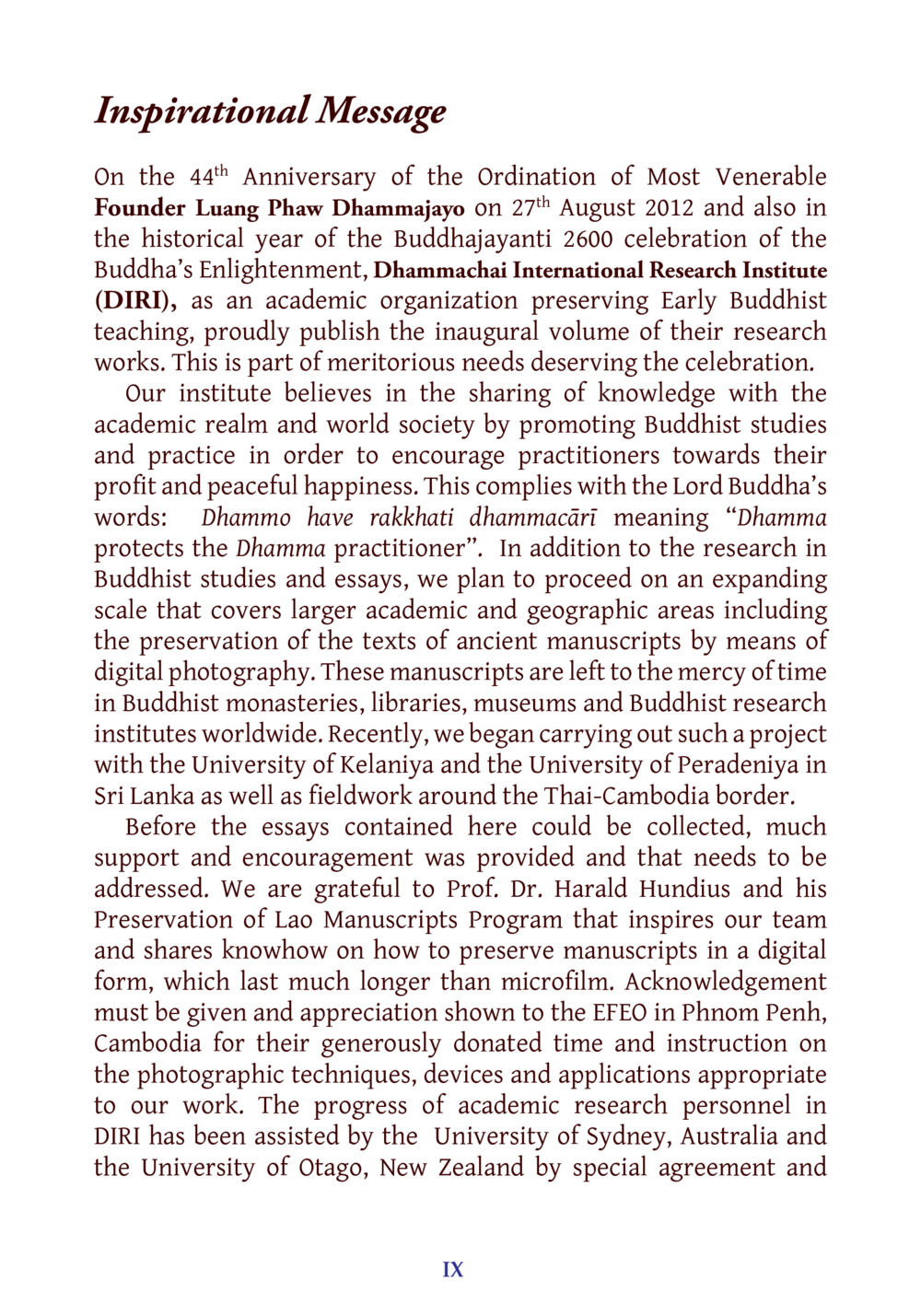Inaugural Volume of Buddhist Research by Dhammachai International Research Institute : หน้า 13/141
DIRI Journal : หน้า 13/141 Celebrating 44 years of Luang Phaw Dhammajayo's ordination with the launch of DIRI's inaugural research volume promoting Buddhist knowledge.
2 ครั้ง

สรุปเนื้อหา
On August 27, 2012, the Dhammachai International Research Institute (DIRI) marked the 44th anniversary of Luang Phaw Dhammajayo's ordination and the significant Buddhajayanti 2600. This inaugural research volume embodies DIRI's commitment to preserving early Buddhist teachings and expanding academic awareness and practice of Buddhism. With projects aimed at digitizing ancient manuscripts in collaboration with institutions in Sri Lanka and ongoing support from international universities, DIRI aims to safeguard and share valuable Buddhist knowledge, aligning its mission with the fundamental teachings of the Buddha.
หัวข้อประเด็น
-44th Anniversary of Luang Phaw Dhammajayo
-Inaugural volume publication
-Buddhist studies and preservation
-Collaboration with international institutions
-Digital preservation of manuscripts
ข้อความต้นฉบับในหน้า
หน้าหนังสือทั้งหมด













































































































































